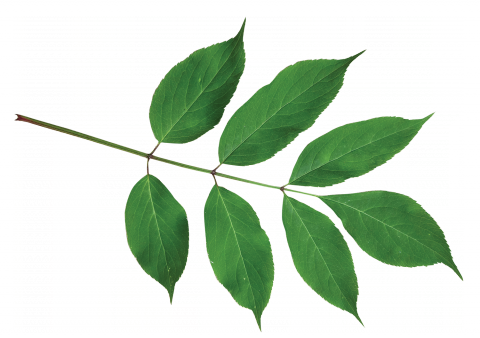
(Sambucus nigra ssp. canadensis)
The Honeysuckle Family (Caprifoliaceae)
Elderberry is a tall, multi-stemmed bush with compound, opposite, deciduous leaves, clusters of small, white flowers and small purplish-black drupes.
Habitat:
Alluvial forests, bogs, ditches, common to riparian zones.
Interesting Facts:
Ripe berries, which contain high levels of vitamin C, flowers and young shoots can be eaten; but the roots, stems, unripe berries and leaves have chemicals that can be mildly poisonous. Medicinal uses of elderberry include treatment of colds and flu; as a purgative, laxative and antiseptic; in addition it has been used as an insect repellent.
Fruit:
Small, purple-black, berrylike drupe, up to .25" in diameter.
Flower:
Small, white, flat-topped clusters up to 8" across, appearing in summer.
Wildlife value:
Berries are a common food source for more than 50 birds and many mammals, and the flowers attract native bees and beneficial insects.
Fruit

Flowers

Leaf type:
Compound


Tree dimensions:

Leaf length: 8.00-14.00 inches
Tree height: 6.00-12.00 feet
PDF link:
Where to find Elderberry on the Louisiana State Arboretum Trails:
WAB - Walker Branch Trail 15.0
Refer to our Live Map to locate this species and its interpretative signage on the trail system.
